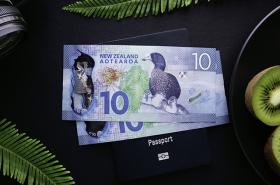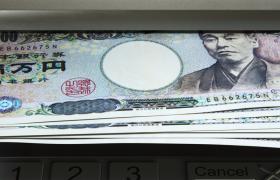Quick Contact

31st May 2019
The New Zealand dollar recovered slightly yesterday and today, after a bit of a drop on Wednesday following less than impressive domestic data and business pessimism surrounding the US/China Trade War. Many investors are now waiting on the May month manufacturing and non-manufacturing purchasing manager index (PMI) data from China to gauge broader economic conditions with New Zealand’s largest trading partner. At the moment though, 1 NZD will buy you:
0.6411 US dollars
69.5097 Japanese yen
0.5682 euros
0.5014 Great British pound
0.8568 Canadian dollars
0.9231 Australian dollars
0.8634 Singapore dollars
Looking around for the best currency deals? Don’t forget our Best Price Guarantee – If you find a better price from a domestic competitor we will beat it.
Budget surplus downgraded, NZD fails to budge
In what could be a positive omen for NZD performance, the New Zealand government on Thursday announced a downward revision of the budget surplus for 2019/20 that failed to spook the NZD against the USD and GBP. The New Zealand government lowered the budget surplus forecast to NZD 1.3 billion while also revising a lower GDP forecast from 2.9% to 2.1%. The lack of downward pressure on the NZD after this announcement suggests that on the back of other weaker than expected domestic data, the market was expecting this downward revision.
The ‘wellbeing budget’, as it is being called, shows a clear plan for increased spending in a bid to stimulate a NZ economy that has been bogged down by increasing global uncertainties including Chinese economic performance, Brexit and the US/China Trade War. With China due to release their manufacturing and non-manufacturing data today, many economists will be watching closely for any negative response in the NZD. If the data is lower than expected but fails to put downward pressure on the NZD, it may be a positive sign that the current trading price will stay relatively stable without any major negative economic catalyst popping up.
Brexit pessimism improves NZD/GBP performance
An announcement yesterday that UK car production was slashed by nearly half over April appears to have spooked investors off the GBP, causing quite an improvement in the NZD/GBP compared with earlier this week. Many car factories, including BMW's mini factory were closed for the month in an effort to cope with the expected disruption caused by a 29th of March Brexit that never eventuated. The spectre of a No-Deal Brexit on October 31st has only increased uncertainty in many UK manufacturing businesses, causing investment to stall and jobs to be lost due to the threat of border delays, production stoppages and additional export/import costs.
The NZD/GBP has also been helped by increasing uncertainty surrounding who will replace Theresa May as leader of the Conservative Party and what their agenda will be. Despite many UK businesses, EU members and economists agreeing that a No-Deal Brexit would likely be economically damaging, several of the eleven candidates for the position including Boris Johnson, Dominic Raab, Andrea Leadsom, and Esther McVey have stated they would leave the EU without a deal. Yikes.
Whoever takes over as May’s successor will have to commit to leaving the European Union no later than October 31st, seek another extension or put forward a second referendum all while facing intense pressure after the Conservative Party’s terrible result in the European elections.
China accuses USA of economic terrorism
In the latest verbal stoush of the escalating US/China Trade War, the Chinese Ministry of Foreign Affairs has accused the US of “economic terrorism, economic hegemonism, and economic unilateralism.”
The statement was made alongside equally ominous rhetoric from Chinese state media, which printed an article yesterday with the headline: "Don't say we didn't warn you."
This verbal escalation comes on the back of a US decision made on May 15, to ban major Chinese companies, such as Huawei, from buying tech components like computer chips from US companies including Google. The catch is that many of those computer chips and other strategic technologies are made using rare earth minerals, of which China is the major exporter. You guessed it; China has now threatened to cut the supply of these minerals in a seemingly never-ending circle of tit-for-tat manoeuvres.
Chinese buyers have also stopped ordering soybean products from US suppliers, on the back of the US announcing a $16 Billion relief plan for farmers affected by dropping exports to China. US stock markets have been in turmoil due to the intensifying trade tensions and are now on track to post their first negative month of 2019, the S&P 500 alone is down 5.5% in May.
During the last week, the inability of the NZD/USD to slide further despite our own domestic woes may reflect growing expectations that the U.S. Federal Reserve will cut interest rates to combat the effects of the Trade War and stimulate the economy. According to analysts, the market is now pricing an almost 80% chance of a September rate cut, which could help keep the NZD from slipping much further without any domestic shocks.
If you are purchasing your currency this week, make sure to add Rate Guard. Attach it with a purchase in store, it’s free and if the rate improves within 14 days we will refund the difference.
This blog is provided for information only and does not take into consideration your objectives, financial situation or needs. You should consider whether the information and suggestions contained in any blog entry are appropriate for you, having regard to your own objectives, financial situation and needs. While we take reasonable care in providing the blog, we give no warranties or representations that it is complete or accurate, or is appropriate for you. We are not liable for any loss caused, whether due to negligence or otherwise, arising from the use of, or reliance on, the information and/or suggestions contained in this blog. All rates are quoted from the Travel Money NZ website and are valid as of 31 May 2019. *Terms and conditions apply to our Best Price Guarantee and Rate Guard. See the Best Price Guarantee and Rate Guard page for more information.










